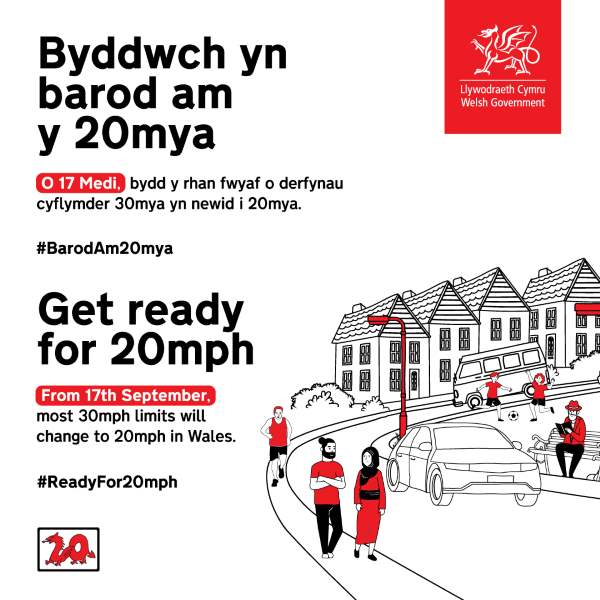-
More News Items
-
New 20mph speed limit on all restricted roads in Wales
Sun 17th Sept,2023
-
Case Study Videos from April 2020
Mon, 2nd March,2020
-
Motorists missing out on Millions
Thurs, 25th July,2019
-
RAC annual report on motoring, celebrating 30 years
Thurs, 10th January,2019
-
Lucky pants, charms and superstitions to pass the driving test
Wed, 14th Nov,2018
-
Best and Worst Dates to Pass Your Driving Test
Fri, 3rd August,2018
-
Learner drivers have spent over £100 million on failed theory tests
Thurs, 21st June,2018
-
Learner Drivers to be allowed on Motorways from June 2018
Thurs, 1st March,2018
-
Driving test changes: new 'show me, tell me' videos
Mon, 18th September,2017
-
Driving test changes from December 2017
Sat, 15th April,2017
-
New mobile phone laws enforced from 1st March 2017
Wed, 1st March,2017
-
Plans to let learner drivers have motorway driving lessons
Monday, 2nd January,2017
-
Sobering Statistics for Young Drivers
Friday, 26th February, 2016
-
Friday,14th August,2015
-
Abolition of the paper counterpart of the UK Driving Licence
Tuesday,17th February,2015
-
DSA and VOSA becomes The Driver and Vehicle Standards Agency (DVSA)
Monday 2nd December, 2013
-
End to foreign language driving tests
Friday, 11th October, 2013
-
New rules for riding a motorcycle or moped from 19th January 2013
Friday, 11th January, 2013
-
Changes to the UK Driving Licence
Tuesday, 18th December, 2012

New 20mph speed limit on all restricted roads in Wales
From 17 September 2023, a default 20mph speed limit is in force on "restricted roads" across Wales.
The Highway Code is being updated online on 17 September 2023 to reflect the 20mph speed limit in Wales.
The driving theory and practical tests have also been amended by the DVSA.

Lower speeds mean that people feel more comfortable to walk and cycle and it is safer for children to walk to school. Older people, disabled people or people with additional needs will feel more able to travel independently.
There is evidence from across the world that vehicle speeds are one of the main reasons why people do not walk or cycle, or do not allow their children to walk or cycle to school.
The World Health Organisation states that the most effective way to improve pedestrian safety is to reduce the speed of vehicles.
In 2022, police force figures indicate that 51% of collisions happened on 30mph roads.
A Transport for London report shows that since 20mph limits were introduced on key roads in London in 2020:
- The number of overall collisions reduced by 25%
- Collisions involving vulnerable road users decreased by 36%
- Collisions involving people walking decreased by 63%
- Collisions resulting in death or serious injury reduced by 25%.
In the distance, a 20mph car can stop, a 30mph car will still be doing 24mph.
A person is around five times more likely to be killed when hit by a vehicle travelling at around 30mph than they are from a vehicle travelling around 20mph.
There are 20mph speed limits in many cities in England.
There are plans to introduce 20mph across Cornwall and in Scotland and more rural authorities are introducing larger scale extended 20mph programmes, and it has announced that it plans for 20mph to become the norm in built-up areas.
This means up to 28 million people in the UK will live in local authorities where 20mph is normal.
Spain introduced a 30 kmph limit (approx. 19mph) for single carriageways in urban areas in 2021. Figures from 2022 show that the number of pedestrians killed in these areas has reduced by 13% compared to pre-pandemic figures.


